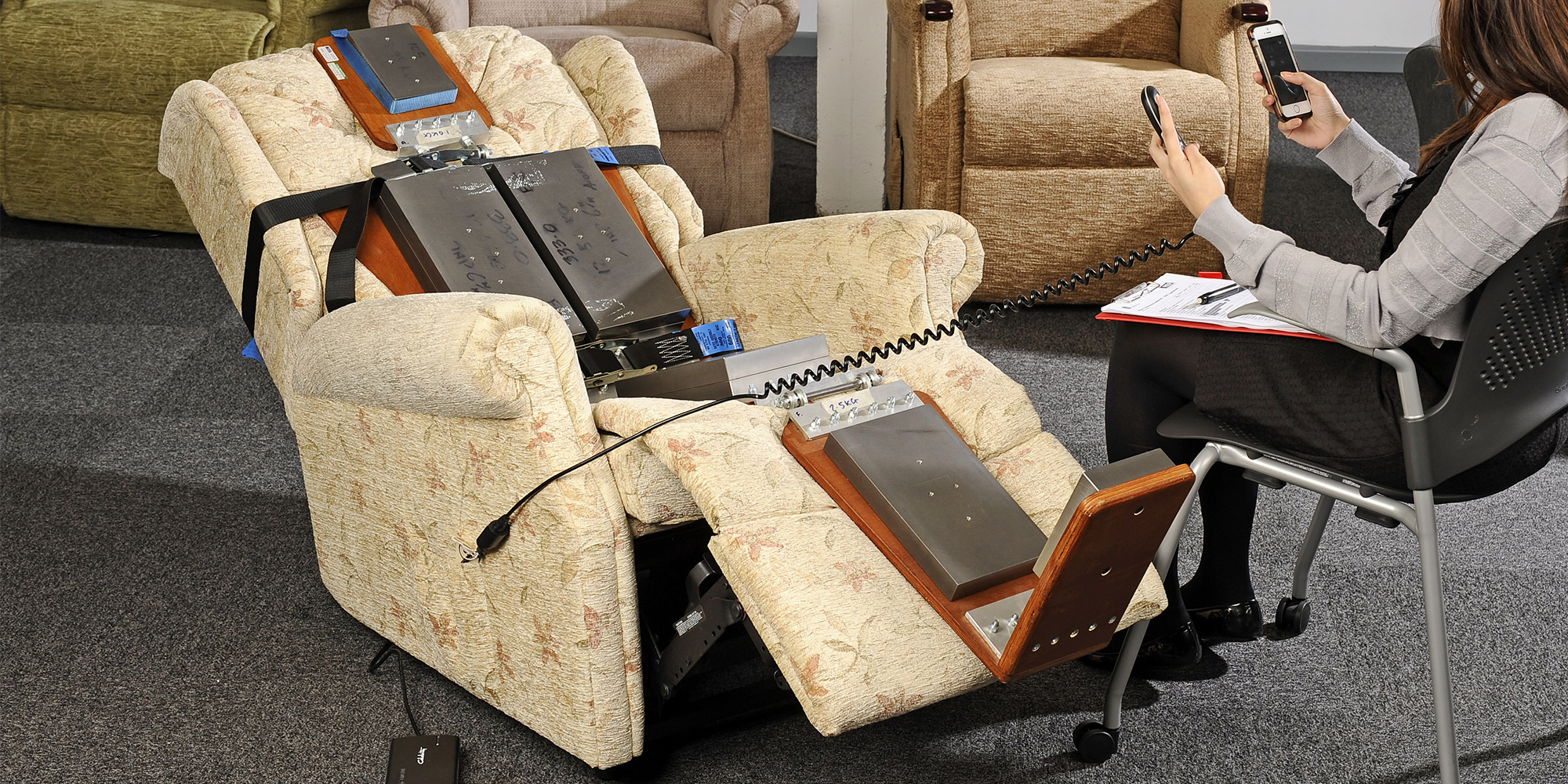ISO 1856 Compression Set of Flexible Cellular Materials in Recliner Cushions Testing
The International Organization for Standardization (ISO) specifies a series of standards that ensure products are safe, reliable and meet quality benchmarks. One such standard is ISO 1856, which provides the method for determining the compression set of flexible cellular materials used in various applications, including recliners and other adjustable furniture.
Compression set testing evaluates how much a material will recover after being compressed under load over time. This test is crucial for quality managers, compliance officers, R&D engineers, and procurement teams who need to ensure that the cushions in recliner chairs maintain their shape and support properties over extended periods of use. Understanding the compression set ensures that consumers receive high-quality products that provide comfort without compromising on safety or durability.
The testing process involves subjecting a specimen cut from the cushion material to a specified load for an agreed-upon duration, then measuring its recovery after removing the load. This method helps manufacturers identify optimal materials and processes early in the development stage, preventing costly rework later. Compliance with ISO 1856 standards is essential for furniture brands aiming to meet global quality benchmarks and ensure their products are accepted worldwide.
In this article, we will explore how ISO 1856 compression set testing is applied specifically to recliner cushions, the equipment required, and the importance of adhering to these standards. We’ll also discuss why this test matters for furniture manufacturers and end-users alike.
Quality and Reliability Assurance
Adhering to ISO 1856 compression set testing ensures that the cushions in recliners meet high standards of quality, reliability, and durability. This standard is particularly important for furniture manufacturers as it helps them maintain consistent product performance over time.
The test involves several critical steps:
- Specimen Preparation: Samples are cut from the cushion material according to ISO 1856 specifications. The size and shape of these samples are crucial for accurate testing.
- Loading: The prepared specimens are subjected to a defined load, typically measured in kilonewtons (kN).
- Duration: Specimens remain under the applied load for an agreed-upon duration, which can range from 24 hours up to several days depending on the material and manufacturer's requirements.
- Recovery Measurement: After removing the load, the specimens are measured for their recovered dimensions. The difference between the initial and final measurements provides insight into the compression set percentage.
The results of this test directly influence product design and manufacturing processes. By ensuring that materials exhibit minimal compression set, manufacturers can create more durable products with improved longevity. This not only enhances customer satisfaction but also contributes to environmental sustainability by reducing waste associated with frequent replacement of cushions.
Compliance with ISO 1856 standards is essential for furniture brands aiming to meet global quality benchmarks and ensure their products are accepted worldwide. It demonstrates a commitment to producing high-quality, reliable products that stand the test of time.
International Acceptance and Recognition
The International Organization for Standardization (ISO) is recognized globally for its role in developing international standards. ISO 1856, specifically targeting compression set testing for flexible cellular materials like those used in recliner cushions, has gained widespread acceptance across industries.
Many countries have adopted these standards as part of their national regulations or industry best practices. For example:
- United States: The American Society for Testing and Materials (ASTM) often aligns its standards with ISO, meaning compliance with ISO 1856 is likely to be accepted in the U.S.
- European Union: EU directives frequently reference ISO standards, ensuring that products compliant with ISO 1856 will meet European regulatory requirements.
- Australia/New Zealand: Standards Australia and New Zealand (AS/NZS) often incorporate ISO standards into their frameworks.
The benefits of adhering to such internationally recognized standards extend beyond compliance. Companies that comply with these tests can enhance their reputation, attract more customers, and open up new markets. This is especially true for manufacturers operating globally or exporting products to countries where stringent quality control measures are in place.
In summary, ISO 1856 compression set testing not only ensures product quality but also facilitates smoother international trade by aligning with global standards. It provides a common language and methodology that transcend national boundaries, fostering greater trust among manufacturers, suppliers, and buyers worldwide.
Competitive Advantage and Market Impact
Compliance with ISO 1856 standards offers furniture manufacturers a significant competitive edge in the market. By ensuring that their recliner cushions meet these stringent quality benchmarks, companies can differentiate themselves from competitors who may not adhere to such rigorous testing protocols.
The impact of adhering to these standards is multifaceted:
- Enhanced Reputation: Meeting international standards boosts brand credibility and trust among consumers. This can lead to increased market share and customer loyalty.
- Increased Sales: Products that pass ISO 1856 tests are more likely to be favored by discerning customers, translating into higher sales volumes.
- Better Customer Satisfaction: Cushions that exhibit minimal compression set provide better support over time, leading to greater customer satisfaction and reduced return rates.
- Sustained Competitive Edge: By maintaining high-quality standards, companies can sustain a competitive edge even as market conditions fluctuate or new competitors enter the space.
In addition to these direct benefits, there are broader implications for the furniture industry. Compliance with ISO 1856 encourages innovation and continuous improvement in product design and manufacturing processes. It drives manufacturers towards developing more sustainable materials and production methods, which can further enhance their market position.
For quality managers, compliance officers, R&D engineers, and procurement teams, adherence to these standards is not just a regulatory requirement but also an opportunity to stay ahead of the curve in terms of product innovation and customer satisfaction. By embracing ISO 1856 compression set testing, furniture manufacturers can ensure that their products meet the highest global quality benchmarks, thereby securing long-term success in the competitive market.





